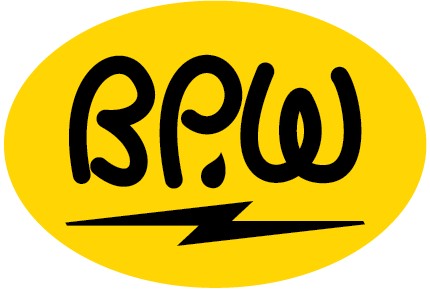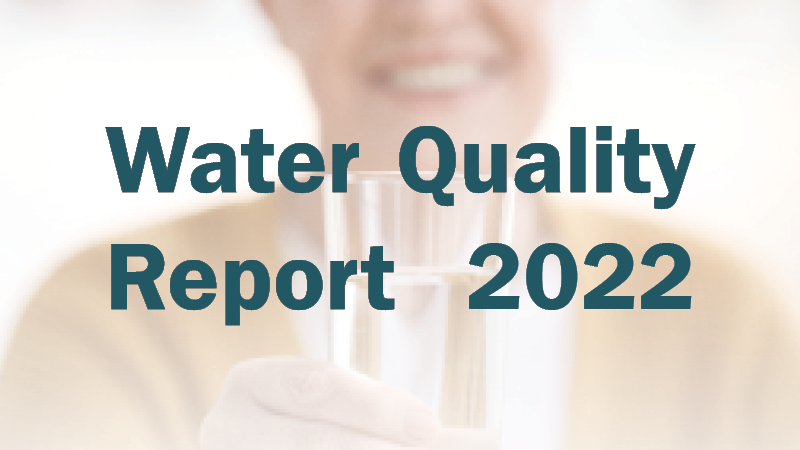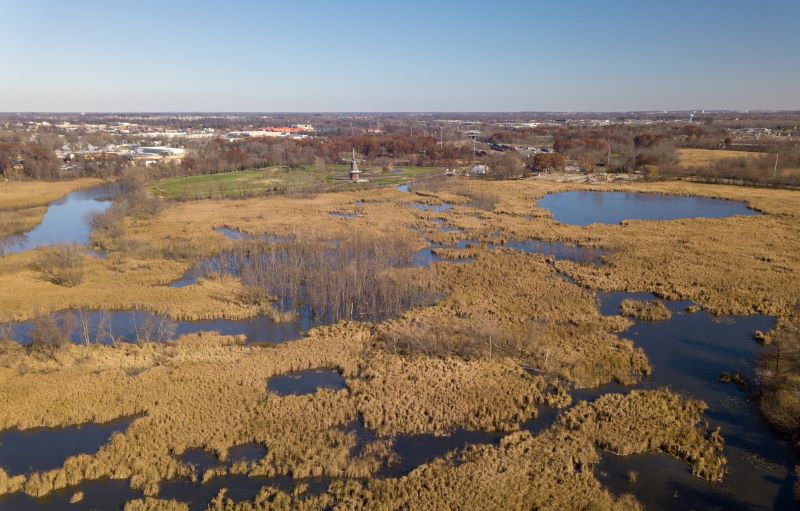Quick Links
A Letter from the Superintendent
Dear Neighbor,
At the Holland BPW Water Treatment Plant, we treat and filter water from Lake Michigan. This ensures healthy drinking water for our community and customers. Our skilled water staff provide excellence in water quality and use our water source responsibly.
We are pleased to report another year of our Water Treatment Plant surpassing all federal and state drinking water standards. Holland BPW’s Water Treatment Plant met all monitoring and reporting requirements for 2022. Our Water Treatment Plant’s state-certified laboratory and independent third-party laboratories perform over 60,000 tests per year. These rigorous tests ensure the highest quality water to our customers.
This report details the drinking water quality that we provided to you in the 2022 calendar year. In this report, you’ll find details about where your water comes from and what it contains. You’ll also learn how your water compares to the U.S. Environmental Protection Agency (EPA) and the Michigan Department of Environment, Great Lakes and Energy (EGLE) standards. You’ll also learn more about what you can do to conserve water and protect our source, Lake Michigan.
EGLE and the U.S. EPA require us to test our water on a regular basis to ensure its safety. We are constantly striving to achieve water quality that is better than what regulations require and have adopted water quality goals that are more stringent than state and federal regulations. While this report contains data on contaminants detected, many other contaminants not listed here were analyzed for and not detected. We update this report annually and will keep you informed of any problems that may occur throughout the year as they happen.
Thank you for taking the time to learn more about your water and what you can do to help us protect this precious resource.
Sincerely,
Nathan Johnson
Water Treatment Plant Superintendent
Learn More
This report is available at hollandbpw.com/water-quality-report and printed copies are also available at our Service Center, 625 Hastings Ave. We invite public participation in decisions that affect drinking water quality.
Your comments and participation are welcome at our public board meetings. Email publiccomment@hollandbpw.com or attend in person at the Holland BPW Service Center, 625 Hastings Ave., on the Monday between the first and second Wednesday of each month at 4:00pm.
We recommend that you call to confirm the meeting time, date and location prior to arriving, or visit our website at hollandbpw.com for details about the meetings.
-
For more information about your water or the contents of this report, please contact Holland Water Treatment Plant at 616-355-1589.
-
For more information about safe drinking water from EGLE, visit michigan.gov/egle/about/organization/drinking-water-and-environmental-health/drinking-water.
-
For more in formation about safe drinking water from the US EPA, visit epa.gov/safewater.
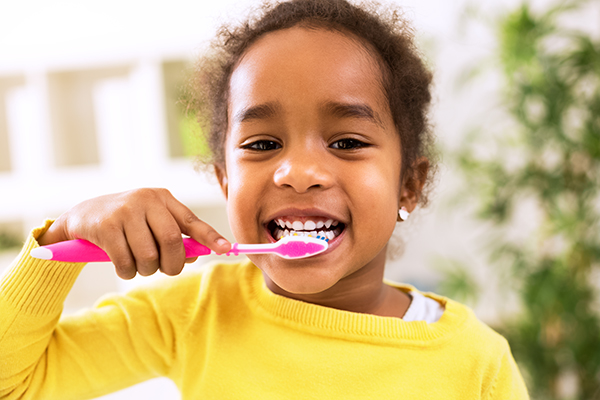

Get to Know Your Water Source
Your Health
Some people may be more vulnerable to contaminants in drinking water than others. People with weakened immune systems have a higher risk of infection, including but not limited to the following groups:
-
People receiving chemotherapy
-
Organ transplant recipients
-
People with HIV/AIDS or other immune systems disorders
-
Some elderly individuals
-
Infants
These groups should seek advice from their health care providers about drinking water. U.S. EPA and the Center for Disease Control also have guidelines to lessen your risk of infection by microbial contaminants.
Contaminants
Drinking water, including bottled water, may contain at least small amounts of some contaminants. The presence of contaminants does not necessarily mean that water poses a health risk.
You can get more information about contaminants and potential health effects by calling the U.S. EPA’s Safe Drinking Water hotline (800-426-4791) or visiting epa.gov/safewater.
Source Water Protections
In 2003, the State of Michigan performed an assessment on our source water. This assessment looked at Lake Michigan’s susceptibility or the relative potential of contamination. The susceptibility rating is given on a scale from “very-low” to “very-high,” with seven possible ratings. Ratings are based on geologic sensitivity, water chemistry and contamination sources. The State rated the Holland BPW’s water intake as “moderately sensitive.” It rated the water source itself as having a “moderately high” susceptibility to contamination.
The State identified 364 potential sources of contamination in the 175 square miles of watershed that could impact our water source. Their report further states, “Historically, the Holland Board of Public Works Water Treatment Plant has effectively treated this water source to meet drinking water standards. There have been no detections of synthetic or volatile organic contaminants in the system’s raw water.” You can get a copy of Holland BPW’s full Source Water Assessment by calling 616.355.1500.
To continue these efforts, Holland BPW has an award-winning Surface Water Intake Protection Plan (SWIPP) in place. The EPA and EGLE encourage this voluntary effort that outlines community-wide actions and efforts to protect drinking water sources. For more information about Holland BPW’s SWIPP, please call the Water Treatment Plant at 616.355.1589.
Sources of Drinking Water
Drinking water (both from the tap and bottled water) can come from rivers, lakes, streams, ponds, reservoirs, springs or wells. Holland BPW’s drinking water comes from Lake Michigan.
As water travels across land or underground, it dissolves naturally-occurring minerals and sometimes radioactive material. Water can also pick up contaminants that come from animal or human activity.
Contaminants that may be present in source water include:
-
Microbial contaminants, such as viruses and bacteria. These contaminants may come from wastewater treatment plants, septic systems, agricultural livestock operations and wildlife.
-
Inorganic contaminants, such as salts and metals. Some of these occur naturally. Salts and metals can also come from urban storm water runoff, industrial or domestic wastewater, oil and gas production, mining or farming.
-
Pesticides and herbicides. These may come from a variety of sources including agriculture and residential uses.
-
Radioactive contaminants. These can be naturally-occurring or the result of oil and gas production and mining activities.
-
Organic chemical contaminants. These include synthetic and volatile organic chemicals, which are by-products of industrial processes and petroleum production. Organic chemical contaminants can also come from gas stations, urban storm water runoff and septic systems.
To ensure that tap water is safe to drink, the U.S. EPA limits the levels of certain contaminants in public water systems. Similarly, Federal Food and Drug Administration regulations limit contaminants in bottled water to protect public health.
Lead & Copper
Pipes can be made of a variety of materials such as iron or plastic. In the past, some may have been made from galvanized metals or lead. Holland BPW completed an inventory of water service lines in 2018. This inventory did not identify any service lines made completely out of lead pipe. This inventory was based on information provided in construction records and plumbing inspections required when service lines were installed or replaced.
Most metals disintegrate as they corrode. However, corroding galvanized pipes pick up deposits that the water carries from other pipes in the system. Because these galvanized pipes once connected to lead goosenecks, lead deposits may have built up inside the galvanized pipe.
For this reason, Holland BPW has a program in place to replace all remaining galvanized lines in the system by the end of 2038. This time frame aligns with State of Michigan regulations and Holland BPW’s asset management plan. This replacement program includes:
-
The public section of the galvanized service lines from the water main to the property line.
-
The private section between the property line and the home, which is usually the responsibility of the homeowner.
Any galvanized piping inside the home is still the responsibility of the homeowner to replace as desired.
Lead
Infants and children who drink water containing lead could experience delays in their physical or mental development. Children could show slight deficits in attention span and learning abilities. Adults who drink this water over many years could develop kidney problems or high blood pressure.
Holland BPW is responsible for providing high quality drinking water, but cannot control the variety of materials used in household plumbing components. When water has been sitting in your home’s pipes for several hours, you can minimize the potential for lead exposure by flushing your tap for 30 seconds to 2 minutes before using water for drinking or cooking. If you have a lead service line it is recommended that you run your water for at least 5 minutes to flush water from both your home plumbing and the lead service line.
If you are concerned about lead in your water, you may wish to have your water tested. Information on lead in drinking water, testing methods, and steps you can take to minimize exposure is available from the Safe Drinking Water Hotline or at epa.gov/safewater/lead.
Copper
Copper is an essential nutrient. However, drinking water with copper levels higher than the action level in a short amount of time could cause gastrointestinal distress. Some people who drink water with copper levels higher than the action level over many years could suffer liver or kidney damage. People with Wilson’s Disease or other conditions that limit the body’s ability to remove excess copper should talk to their health care provider.
Quantity of Service Types in 2022
Service Description | City of Holland | Holland Township | Laketown Township | Park Township | Total |
|---|---|---|---|---|---|
Copper, Plastic, and Other Non-Lead | 7,701 | 3,935 | 1,283 | 654 | 13,573 |
Lead Service: Lead Pipe | 0 | 0 | 0 | 0 | 0 |
Lead Service: Galvanized Pipe with Lead Gooseneck | 1,814 | 0 | 0 | 27 | 1,841 |
Lead Service: Galvanized Pipe Previously Connected to Lead Gooseneck | 1,677 | 4 | 0 | 12 | 1,693 |
Unknown Material | 224 | 484 | 35 | 11 | 754 |
Total | 11,416 | 4,423 | 1,318 | 704 | 17,861 |
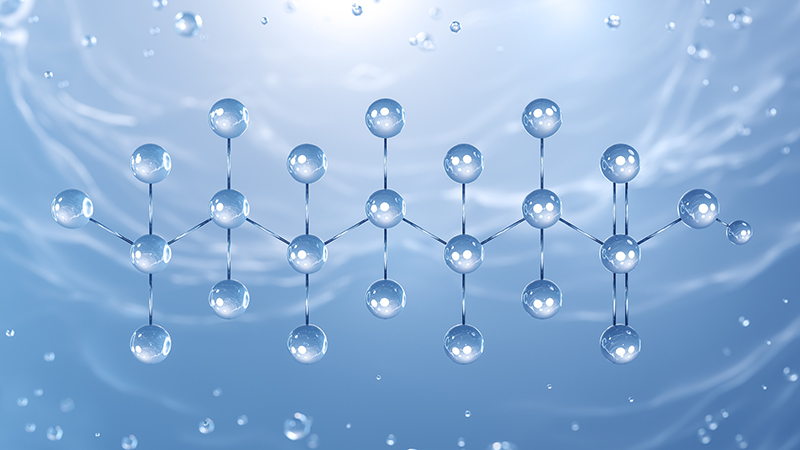
PFAS
Per- and polyfluoroalkyl substances (PFAS), sometimes called PFCs, are a group of chemicals that are resistant to heat, water, and oil. The U.S. EPA has named PFAS as an emerging contaminant. For decades, PFAS have been used in industrial applications and consumer products and are still used today. Products with PFAS include carpeting, waterproof clothing, upholstery, food paper wrappings, fire-fighting foams, and metal plating. PFAS have also been found at low levels in both the environment and blood samples from the general U.S. population.
These chemicals are persistent, which means they do not break down in the environment. PFAS chemicals also bioaccumulate, meaning the amount of the chemical in a person’s body builds up over time in their blood and organs.
Why was Holland BPW’s Source Water Tested for PFAS?
Holland BPW follows the EGLE standard compliance monitoring schedule for PFAS MCLs. In 2020, EGLE developed Maximum Contaminant Levels (MCLs) for seven PFAS compounds in Michigan. Even before EGLE developed PFAS MCLs, Holland BPW participated in EGLE-coordinated voluntary sampling in 2019. With health and safety at the core of our values, we saw this initiative as a chance to learn about our source water.
How Can PFAS Affect People’s Health?
Although our understanding of these emerging contaminants constantly changes, higher levels of PFAS have the potential to cause negative health effects. These include increased cholesterol, changes in hormones and the immune system, decreased fertility, and increased risk of some cancers. Epidemiological and laboratory studies in animal models support these links to health effects in humans.
If you are concerned about exposure to PFAS in your drinking water, please contact
-
Michigan Department of Health and Human Services Toxicology hotline at 800-648-6942
-
Center for Disease Control and Prevention/ATSDR at www.cdc.gov/cdc-info or 800-232-4636.
Scientists are still learning about the health effects of exposure to PFAS, including exposure to mixtures.
What Other Ways Could I Be Exposed to PFOA, PFOS and Other PFAS Compounds?
PFAS are used in many consumer products, including:
-
Food packaging such as fast-food wrappers and microwave popcorn bags
-
Waterproof and stain-resistant fabrics such as outdoor clothing, upholstery, and carpeting
-
Nonstick coatings on cookware
-
Cleaning supplies including some soaps and shampoos.
Exposure to PFAS can come from house dust, indoor and outdoor air, food, and drinking water. More research is needed to understand how people can be exposed to PFAS.
Who Can I Call if I Have Questions about PFAS in my Drinking Water?
If any resident has additional questions regarding this issue, the State of Michigan Environmental Assistance Center can be contacted at 800-662-9278.
Where can I Learn More about PFAS?
For information on PFOA, PFOS, and other PFAS, including possible health outcomes, you may visit these websites:
Terms & Abbreviations
90 percent of the samples taken were below the number listed.
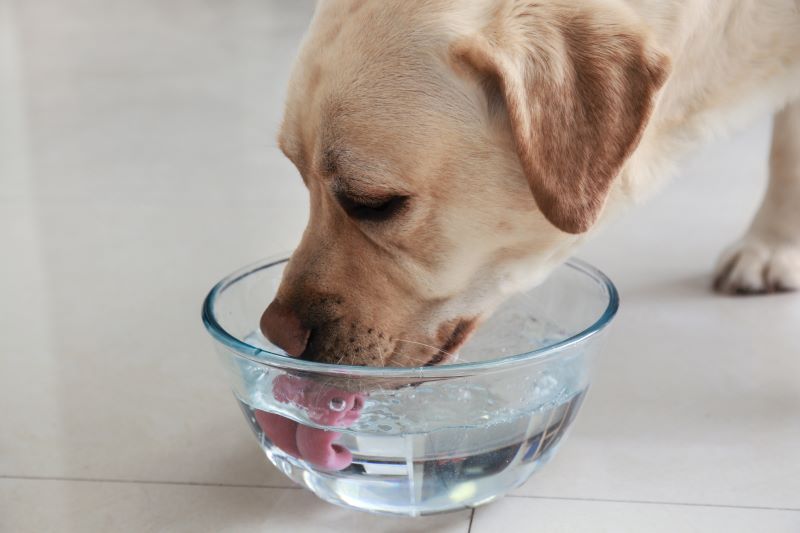
Water Quality Data
The tables below list all the drinking water contaminants that we detected during the 2022 calendar year. The presence of these contaminants in the water does not necessarily indicate that the water poses a health risk. The data presented in this table is from testing done January 1 - December 31, 2022.
Holland Water Treatment Plant Data for 2022 (WSSN 3190)
Regulated at the Water Treatment Plant
Substance (units) | EPA's MCL, TT | EPA's MCLG | Highest Level Detected | Violations | Range of Detection | Typical Source of Contaminant |
|---|---|---|---|---|---|---|
Fluoride (ppm) | 4.00 | 4.00 | 0.78 | None | 0.07 - 0.78 | Erosion of natural deposits; Water additive which promotes strong teeth; Discharge from fertilizer and aluminum factories |
Nitrate (ppm) | 10 | 10 | 0.770 | None | 0.229 - 0.770 | Runoff from fertilizer use; Leaching from septic tanks, sewage; Erosion of natural deposits |
Turbidity (NTU) | 1.0 | N/A | 0.179 | None | 0.01 - 0.179 | Cloudiness of water; Good indicator of the effectiveness of our filtration system |
PFAS (ppt) | N/A | EGLE MCL Varies | All results for PFAS compounds were less than the EGLE minimum reporting limit of 2 ppt or not detected. |
Regulated at Customer's Tap
Substance (units) | EPA's MCL, AL | EPA's MCLG | 90th Percentile Detected | Violations | Range of Detection | Typical Source of Contaminant |
|---|---|---|---|---|---|---|
Copper (ppm) - Distribution | 1.3 | 1.3 | 0 | None | 0.0 - 0.1 | Corrosion of household plumbing systems; Erosion of natural deposits |
Lead (ppb) - Distribution | 15 | 0.0 | 1 | None | 0 - 2 | Lead service line, corrosion of household plubming including fittings and fixtures; Erosion of natural deposits |
Regulated in Distribution System
Substance (units) | EPA's MCL, AL | EPA's MCLG | Highest Level Detected | Highest Local Running Average | Violations | Range of Detection | Typical Source of Contaminant |
|---|---|---|---|---|---|---|---|
Chlorine [Cl2] (ppm) | 4.00 MRDL | 4.00 MRDLG | 1.71 | 1.22 | None | 0.05 - 1.71 | Water additive used to control microbes |
Total Trihalomethanes [TTHM] (ppb) | 80 | 0 | 56.3 | 46.0 | None | 23.7 - 56.3 | Byproduct of drinking water disinfection |
Haloacetic Acids [HAA5] (ppb) | 60 | 0 | 36.1 | 21.9 | None | 11.5 - 36.1 | Byproduct of drinking water disinfection |
Total Coliform Bacteria | <5% | 0 | 0.0 | N/A | None | 0.0 - 0.0 | Naturally present in the environment |
Unregulated Contaminants
Substance (units) | EPA's MCL, AL | EPA's MCLG | Highest Level Detected | Violations | Range of Detection | Typical Source of Contaminant |
|---|---|---|---|---|---|---|
Sodium (ppm) | N/A | N/A | 16.0 | None | 10.2 - 16 | Erosion of natural deposits |
These are contaminates for which the EPA has not established drinking water standards. The purpose of the unregulated contaminates monitoring is to assist EPA in determining the occurrence of unregulated contaminates in drinking water. Holland BPW performed additional testing for other unregulated contaminants; no detections were found. Results of these tests are available by contacting the Water Treatment Plant at 616-355-1589.
Laketown Township
Distribution System (WSSN 3747)
Substance (units) | EPA's MCL, TT | EPA's MCLG | Highest Level Detected | Highest Local Running Average | Violations | Range of Detection | Typical Source of Contaminant |
|---|---|---|---|---|---|---|---|
Chlorine [Cl2] (ppm) | 4.00 MRDL | 4.00 MRDLG | 1.55 | 1.21 | None | 0.94 - 1.55 | Water additive used to control microbes |
Total Trihalomethanes [TTHM] (ppb) | 80 | 0 | 66.1 | 50.6 | None | 38.3 - 66.1 | Byproduct of drinking water disinfection |
Haloacetic Acids [HAA5] (ppb) | 60 | 0 | 39.8 | 23.4 | None | 14.6 - 39.8 | Byproduct of drinking water disinfection |
Total Coliform Bacteria | TT | 0 | 1.0 | N/A | None | 0.0 - 1.0 | Naturally present in the environment |
Regulated at Customer's Tap
Substance (units) | EPA's AL | EPA's MCLG | 90th Percentile Detected | Violations | Range of Detection | Typical Source of Contaminant |
|---|---|---|---|---|---|---|
Copper (ppm) | 1.3 | 1.3 | 0.0 | None | 0.0 - 0.1 | Corrosion of household plumbing systems; Erosion of natural deposits |
Lead (ppb) | 15 | 0 | 0.0 | None | 0.0 - 0.0 | Lead service line, corrosion of household plubming including fittings and fixtures; Erosion of natural deposits |
Park Township
Regulated in Distribution System (WSSN 5203)
Substance (units) | EPA's MCL, TT | EPA's MCLG | Highest Level Detected | Highest Local Running Average | Violations | Range of Detection | Typical Source of Contaminant |
|---|---|---|---|---|---|---|---|
Chlorine [Cl2] (ppm) | 4.00 MRDL | 4.00 MRDLG | 1.61 | 0.96 | None | 0.20 - 1.61 | Water additive used to control microbes |
Total Trihalomethanes [TTHM] (ppb) | 80 | 0 | 57.9 | 46.5 | None | 23.7 - 57.9 | Byproduct of drinking water disinfection |
Haloacetic Acids [HAA5] (ppb) | 60 | 0 | 38.7 | 22.6 | None | 10.8 - 38.7 | Byproduct of drinking water disinfection |
Total Coliform Bacteria | TT | 0 | 0.0 | N/A | None | 0.0 - 0.0 | Naturally present in the environment |
Regulated at Customer's Tap
Substance (units) | EPA's AL | EPA's MCLG | 90th Percentile Detected | Violations | Range of Detection | Typical Source of Contaminant |
|---|---|---|---|---|---|---|
Copper (ppm) | 1.3 | 1.3 | 0.0 | None | 0.0 - 0.1 | Corrosion of household plumbing systems; Erosion of natural deposits |
Lead (ppb) | 15 | 0 | 0.0 | None | 0 - 5 | Lead service line, corrosion of household plubming including fittings and fixtures; Erosion of natural deposits |
Unregulated Contaminants
The 1996 Safe Drinking Water Act (SDWA) amendments require that once every five years the EPA must issue a new list of no more than 30 unregulated contaminants to be monitored by public water systems.
The fourth Unregulated Contaminant Monitoring Rule (UCMR 4) was published in the Federal Register on December 20, 2016. UCMR 4 required monitoring for 30 chemical contaminants between 2018 and 2020 using analytical methods developed by EPA and consensus organizations. This monitoring provides a basis for future regulatory actions to protect public health.
For more information about UCMR4 visit epa.gov/dwucmr/fourth-unregulated-contaminant-monitoring-rule.
Contaminant (ppb) | Min | Max | Average |
|---|---|---|---|
HAA5 | 34.30 | 37.00 | 35.65 |
HAA6Br | 13.40 | 13.90 | 13.65 |
HAA9 | 46.80 | 49.90 | 48.33 |
Chlorodibromoacetic | 1.20 | 1.20 | 1.20 |
Dibromoacetic Acid | 0.66 | 0.67 | 0.67 |
Dichloracetic Acid | 14.70 | 15.50 | 15.10 |
Trichloroactic | 18.90 | 20.50 | 19.70 |
Bromochloroacetic Acid | 4.60 | 4.60 | 4.60 |
Bromodichloroacetic Acid | 6.90 | 7.30 | 7.15 |
Manganese | 0.26 | 0.26 | 0.26 |
Total Organic Carbon (TOC) | 600 | 600 | 600 |
Water Conservation
Lake Michigan is a precious resource. We share this great resource with plants, animals, fish, and each other. Just as we share in the benefits of this Great Lake, we share in the responsibility of protecting and conserving our water source.
Upgrading Our Infrastructure
Our Infrastructure
In 2019, we performed a reliability study of our water system. Results of the study showed a need for a second transmission water main on the north side of Lake Macatawa. Transmission mains are large-diameter water mains that move water from our Water Treatment Plant to smaller water mains. These smaller water mains then distribute the water to our customers. Redundancy makes sure that our service is reliable. Having a second transmission main creates more than one path, preventing service interruption if an issue occurs.
In response to the study results, we installed a new pipeline to the north of the existing water main. This main runs along Lakewood Blvd in Park and Holland Townships and improves the reliability of our transmission system.
Future Improvements
Holland BPW provides retail water service to the City of Holland, and some sections of Park, Laketown, Fillmore and Holland Charter Townships. We also provide wholesale water service to the City of Zeeland, and by extension, Zeeland Township. These customers usually receive water from the Holland Water Treatment Plant. However, we connect with Holland Township’s water system and the Wyoming Water Treatment Plant for emergency service. That way if either our Water Treatment Plant or Wyoming’s Water Treatment Plant were to experience an issue, we can share and continue to provide water for all of our customers.
As our community has grown, so have our needs for essential services like electricity and drinking water. Our drinking Water Treatment Plant is nearing 70 years of service. To continue providing the highest quality water services, we anticipate updates to chemical storage at our Water Treatment Plant along with water main replacements and upgrades to our water distribution system. Included in those improvements are the lead/galvanized service line replacements for our customers.
We look forward to continuing our careful planning for the future of Holland to reliably provide essential water services to all.

